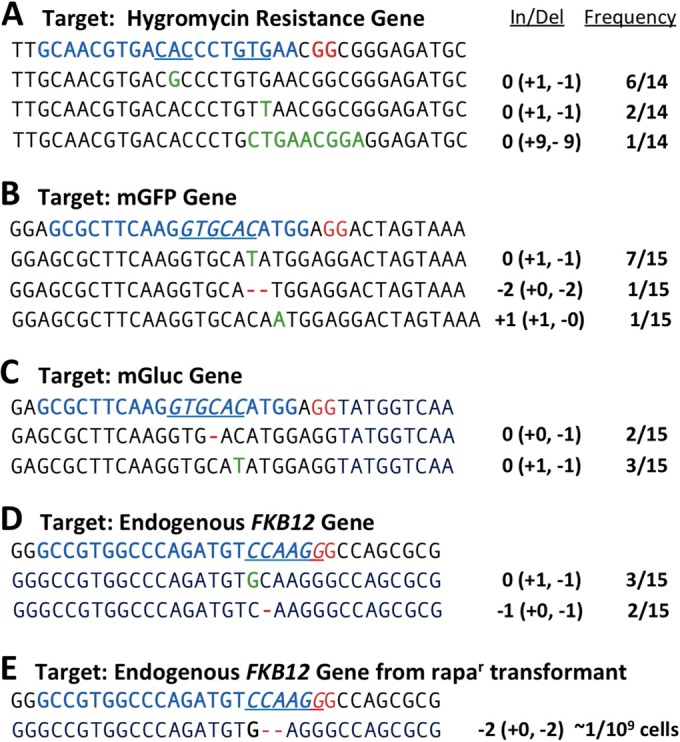FIG 4.

Confirmation of Cas9/sgRNA-mediated mutagenesis of sgRNA target sites within the target genes by DNA sequencing. (A) Hygromycin resistance gene. Fourteen cloned DNA fragments of 235 bp containing DNA from PCR-amplified sgRNA target regions of hygromycin resistance genes mutated by Cas9/sgRNA treatment were subjected to DNA sequencing. DNA sequences of a segment surrounding the sgRNA target site are shown for each clone, with the sequence of the nonmutagenized DNA region shown as the top line. The 20-nucleotide target sequence for the Cas9/sgRNA complex is depicted in blue, the PAM site is depicted in red, and the DraIII recognition site is underlined in blue. For the Cas9/sgRNA-mutagenized DNA sequences, inserted nucleotides are shown in green. The net increase or decrease in fragment length and the length of insertions and/or deletions (In/Del) along with the frequency of the mutant sequence within the total of sequenced clones are provided in the column to the right. (B) Same conditions as those described for panel A but with the target mGFP gene containing an ApaLI restriction site as the sgRNA target within the 5′ target region of the gene. Deleted nucleotides are denoted by red dashes. (C) Same conditions as those described for panel A but with the target Gluc gene containing an ApaLI restriction site as the sgRNA target within the 5′ target region of the gene. (D) Same conditions as those described for panel A but with the target FKB12 gene containing an StyI restriction site as the sgRNA target within the coding region of the gene. (E) DNA sequence of the region of an endogenous FKB12 gene target for gene modification by Cas9/sgRNA (top line) and the DNA sequence of the same region of a mutagenized FKB12 gene isolated from an extremely rare Cas9/sgRNA-treated, rapamycin-resistant Chlamydomonas transformant (bottom line).
